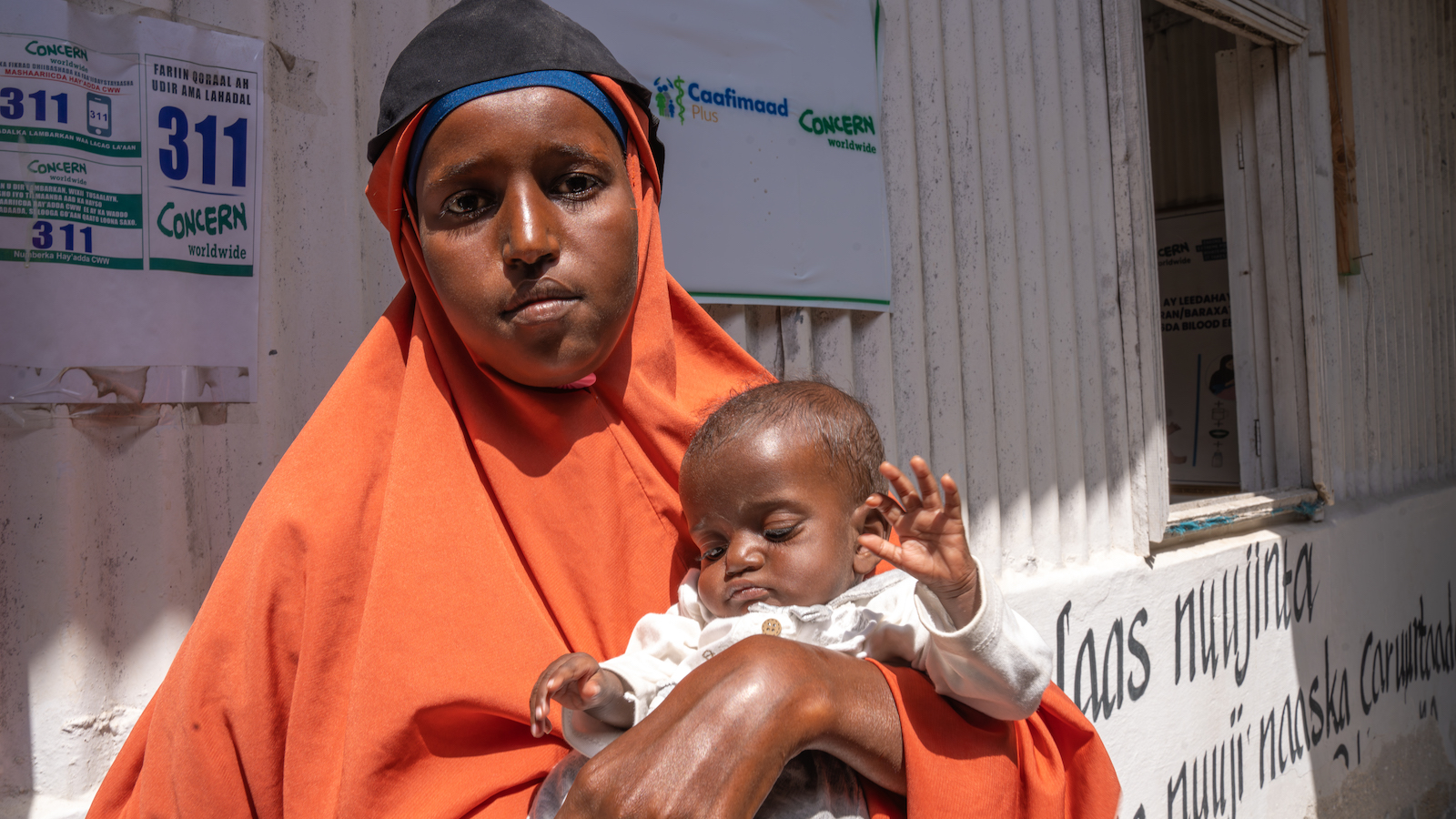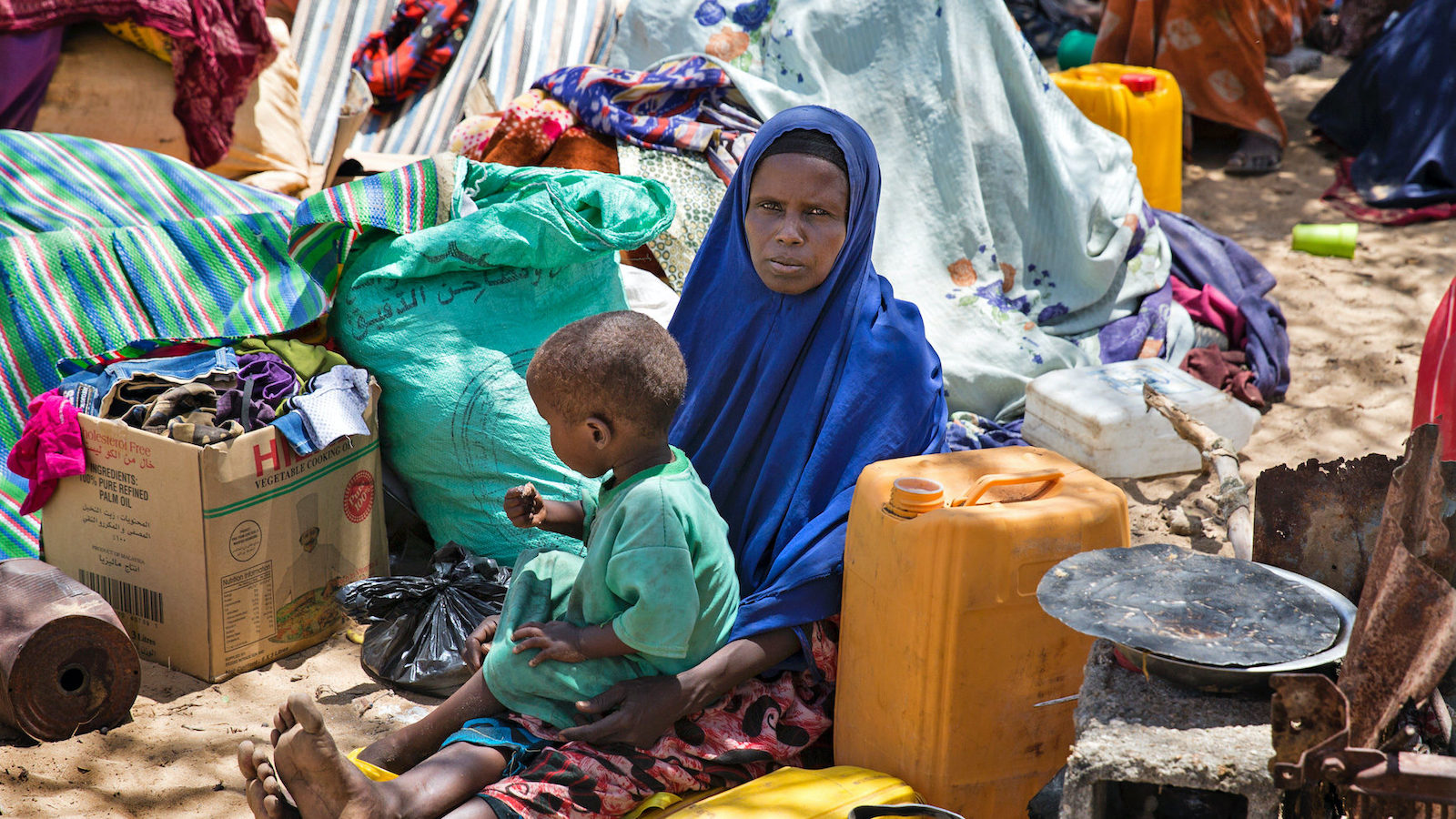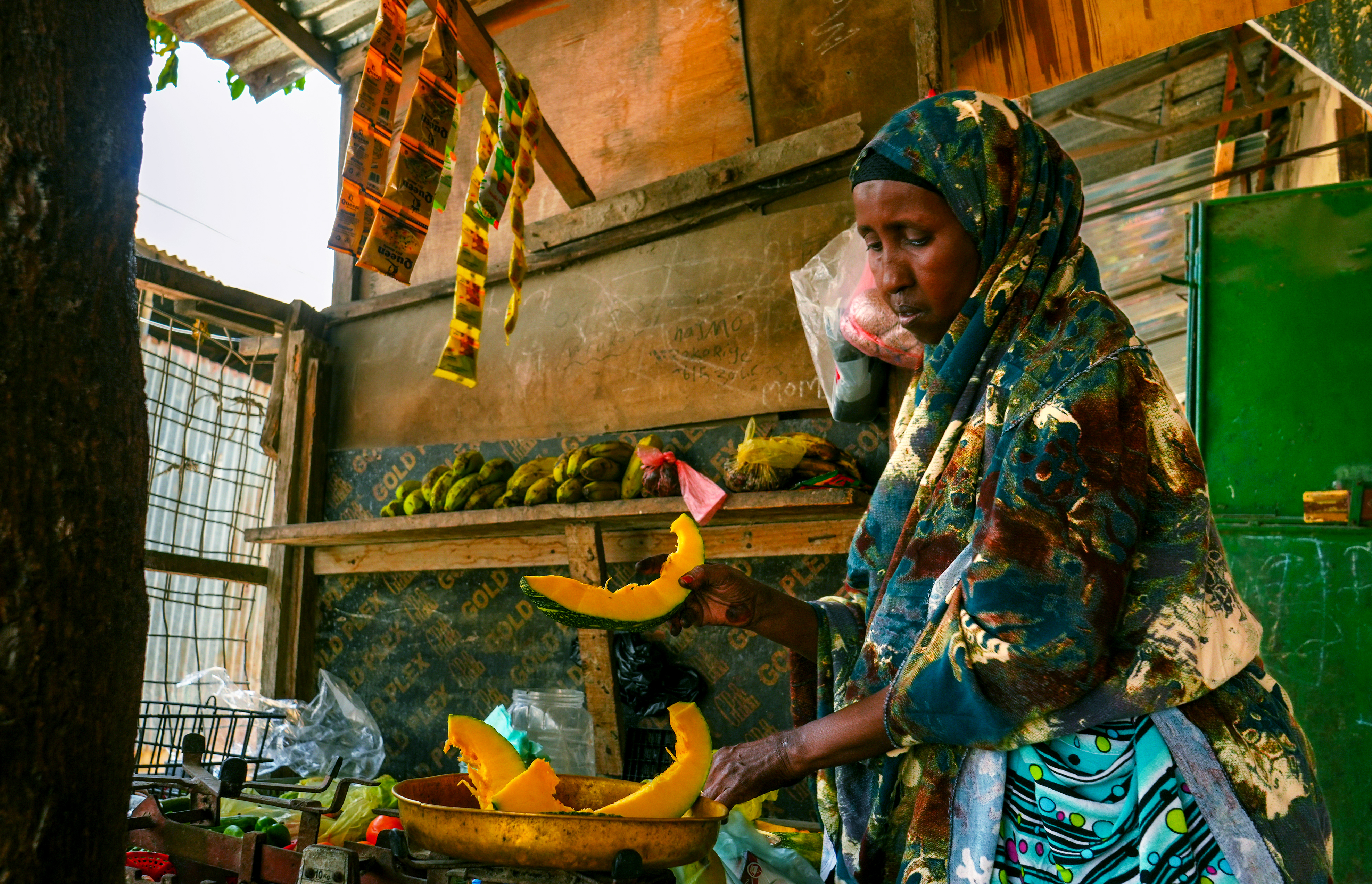Hunger in Somalia has a major effect on expectant mothers and their young children. For them, these nutrition clinics are lifesavers.
“My life was good,” says Naima* of her life in Burhakaba, a town in Somalia’s southwestern Bay region.
Naima moved from Mogadishu to Burhakaba in 2019. She was looking forward to starting a new life after the death of her father left her and her mother without any resources. Naima’s mother moved in with her own mother, and Naima married Hassan*, whom she met through her father. The young couple moved back to Hassan’s hometown.
“Life was good,” Naima, now 22, says again. “We farmed maize and had enough food for our family.” She and Hassan (now 21) welcomed their first daughter, Jamilah*, and were expecting their second, and things began to seem like they were heading in the right direction.
“Then the drought came.”
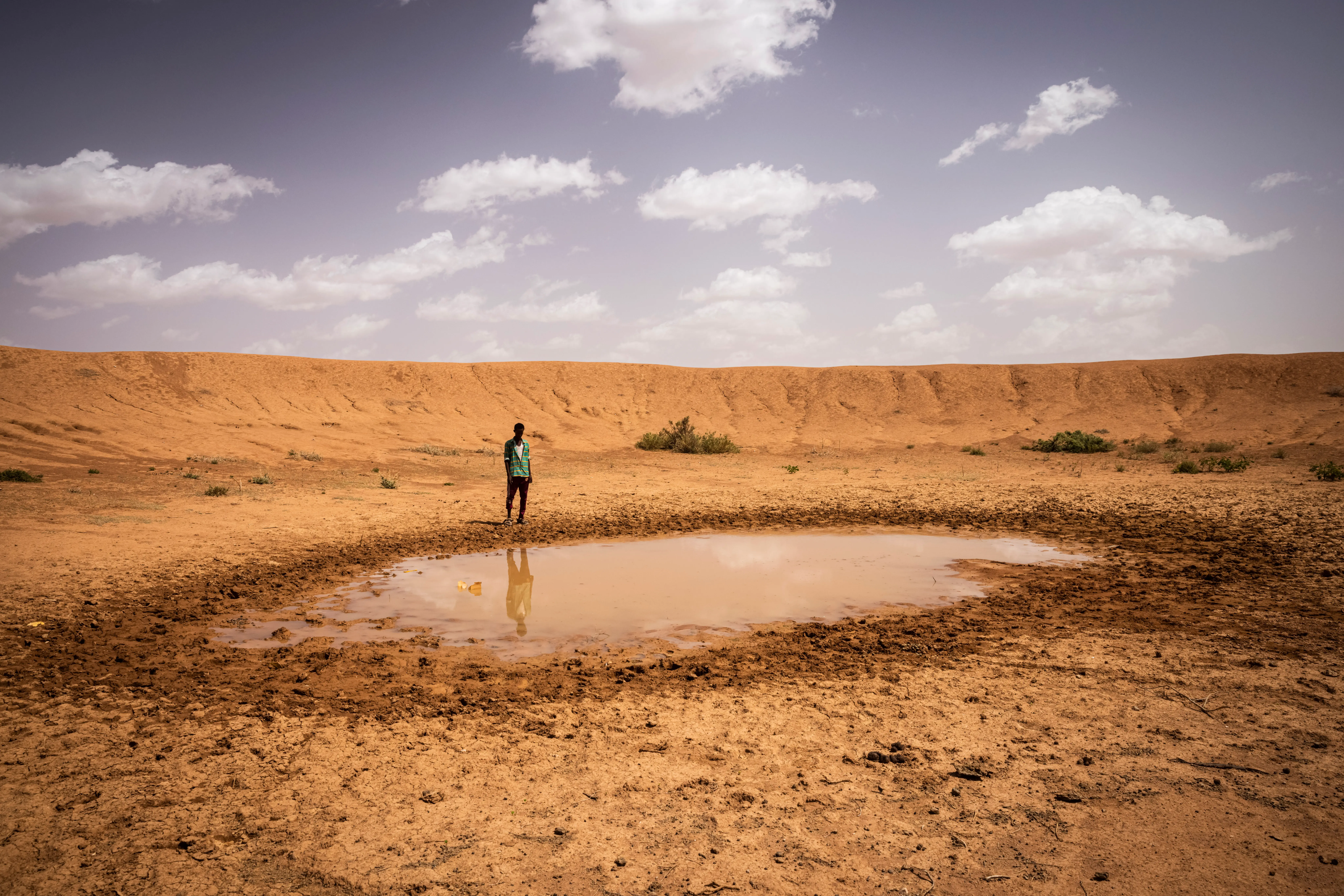
The worst drought in 40 years
For over a decade, drought in Somalia has been the norm rather than the exception. Historically, it’s been one of the main causes of hunger in the country — especially since roughly 80% of Somalis rely on agriculture as both a source of income and source of their own food. For the last two years, it has ranked top among the hungriest countries in the world on Concern Worldwide and Welthungerhilfe’s Global Hunger Index.
The situation worsened across the Horn of Africa in 2020, with the first of a series of failed rainy seasons that, over the following three years, became the worst drought to hit the region in 40 years. Naima and Hassan managed to survive the first few years in Burhakaba, but with parts of the country pushed to the brink of famine, they realized that the road to recovery would be a long one. Hassan was unable to find other work to supplement their farming losses.
While pregnant, Naima made the decision to travel back to Mogadishu to be with her mother and find more assistance.

Another 40-year crisis
“You know,” Naima adds, “the reason I left Burhakaba was not just the drought.” Violence and conflict form one of the other key drivers of hunger in Somalia. Indeed, conflict is often linked to hunger, with attacks increasing during shortages of food and other essentials, and it’s been a fact of life in Somalia for more than four decades.
“When the drought came, people started to struggle, and this led to clan conflicts,” explains another mother who, like Naima, relocated to Mogadishu following the drought. “When the two clans fight, they block all the roads in the village to prevent us from leaving. This led to our life becoming very expensive as the price of food went up, and it became difficult to fetch water.”
Faced with similar circumstances, Naima made a perilous journey to get to safety. Hassan stayed home, leaving his pregnant wife to travel with their young daughter in a car shared by several passengers hoping to make it to the capital. At one point, the car was stopped, a story Naima still struggles to retell. “I was so scared, I thought that this would be my last day in my life,” she says.
Ultimately, the group that stopped the car allowed the passengers to continue — but not before taking everything they had that was of value.
Among those hit hardest
“The people we were traveling with helped us with food for my baby, but for me I did not have enough to eat,” she remembers. After two days, she arrived in Mogadishu, worn out from hunger and trauma. Her mother met her and brought her to the Concern-supported Wadajir Health Center. It was there that Naima gave birth to Leyla*.
Pregnant women and children are among those hit hardest by a hunger crisis. Like her mother, Leyla was underweight and hadn’t received enough nutrients during her gestation. The baby’s fragile health sent a clear signal from the beginning, to Naima. She hadn’t experienced anything like Leyla’s cries or sickness with Jamilah.
“I realized that my baby was malnourished,” she says. “When I was pregnant, I was sick; after I delivered, my baby is sick. It’s a very disappointing feeling.”
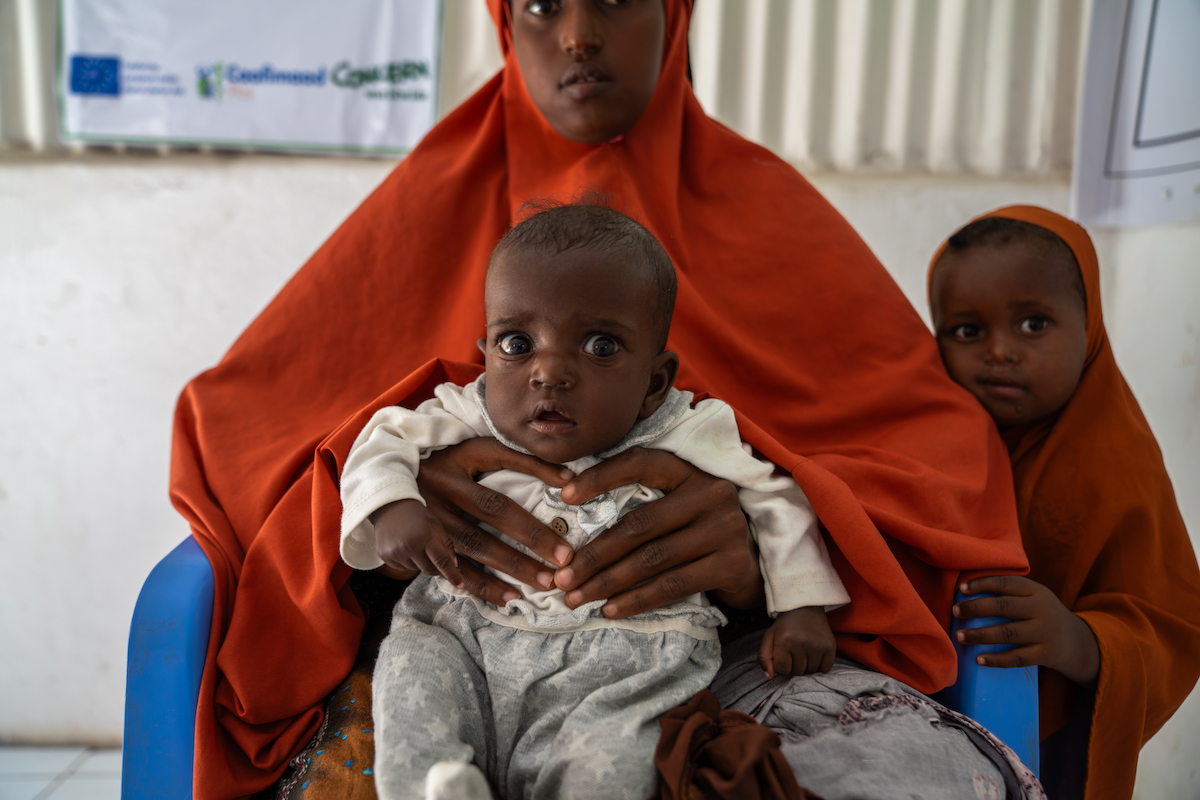
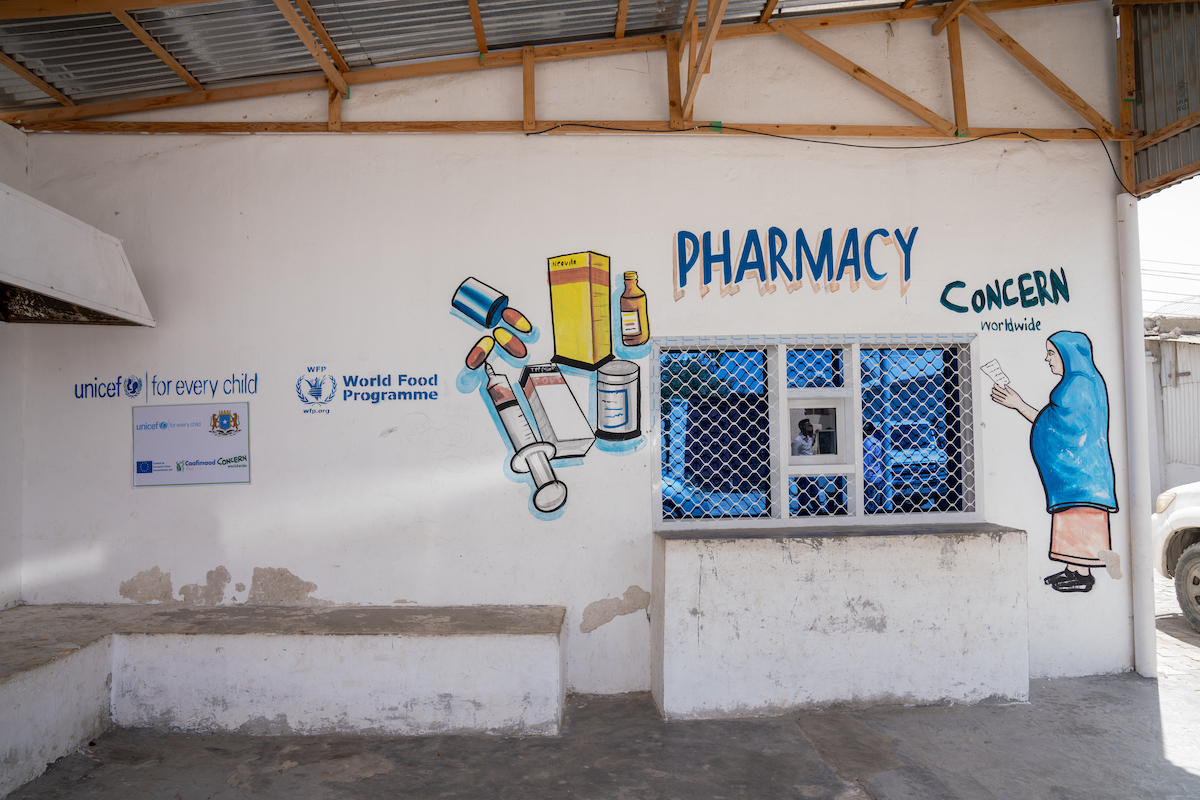
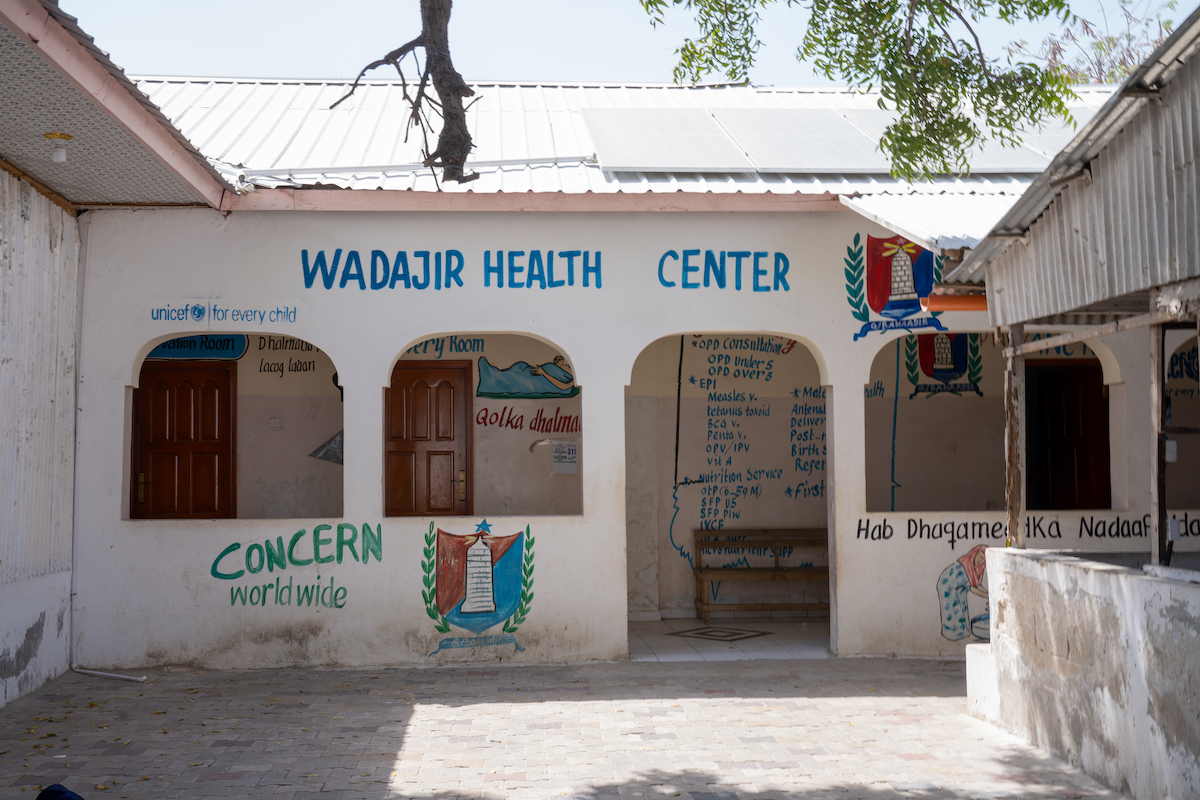
Knowing exactly what to do
The Wadajir clinic staff, however, knew exactly what to do. They admitted Leyla for care, treating her for a stomach infection and malnutrition. For the latter, they gave Naima rounds of supplementary therapeutic food to feed her daughter. They also monitored Naima’s iron levels and other vitals and helped her get the treatment she needed to regain her health postpartum.
The care and support they received at Wadajir, and the signs of progress that Naima began to see, gave her a renewed sense of optimism. Leyla went from weighing three kilos (just over six and a half pounds) to four and a half kilos (nearly ten pounds).
“The first time that I heard my child was four kilos, I felt very happy,” she remembers. “When I compare her to other children her age, I feel very emotional. I cannot help it. But with the supplementary feeding, I am hopeful that she will improve and that she will get better.”
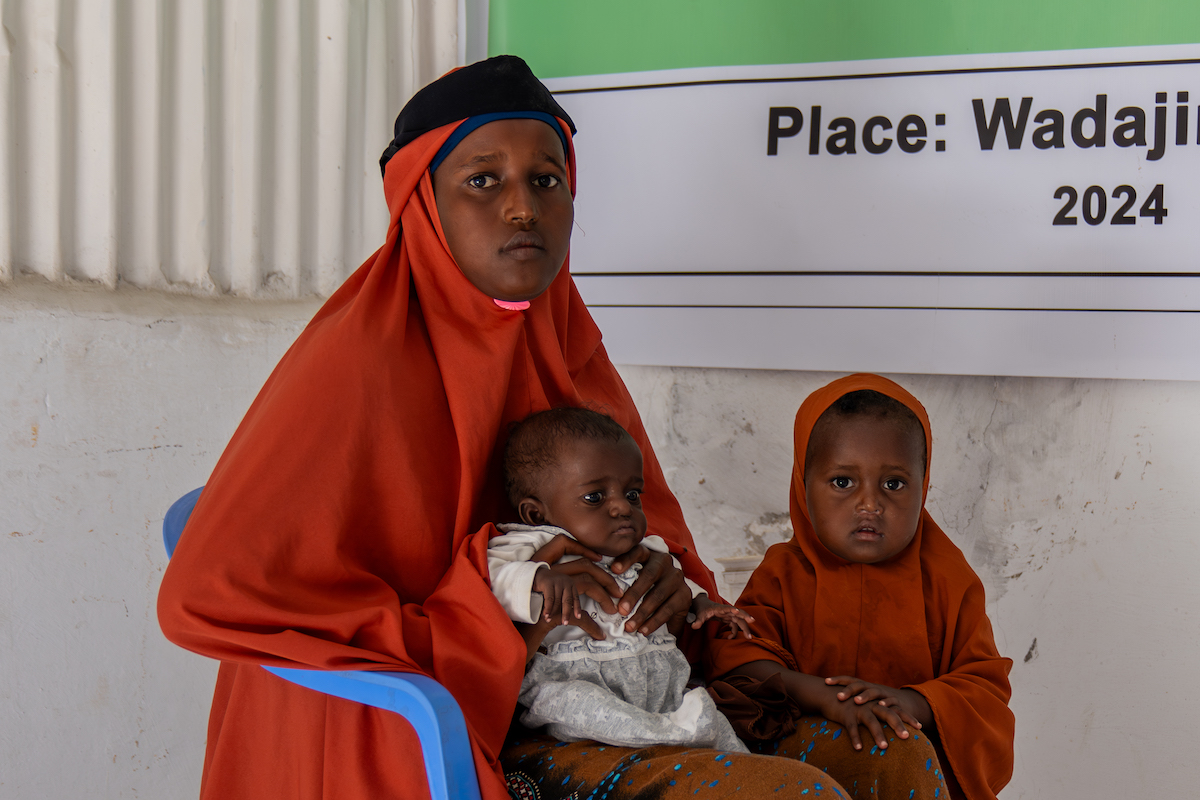
Looking ahead
Leyla and Naima have both rounded the corner after a harrowing few months. But, as Naima says, they aren’t completely out of the woods: “Getting food is our biggest challenge at the moment,” she says, but she is working to make ends meet. Having her mother close by has been helpful, and she remains hopeful that both her girls will go on to have good futures.
Those futures are shaped by the present. The first 1,000 days of a child’s life are among the most critical for determining their lifetime of health, which in turn will have an impact on their success in all areas of life — from education to a career to their own families. It’s one of the reasons so much of our work at Concern (especially in emergencies) focuses on the basics of health and nutrition.
At the end of 2024, one-fifth of Somalia’s population was coping with high levels of food insecurity — including 1.7 million children facing acute malnutrition (roughly a quarter of whom were facing severe acute malnutrition). Working with both local partners like Wadajir as well as the Ministry of Health, last year Concern delivered specialized nutrition services through 17 static and mobile facilities, treating over 63,000 children (including Leyla). We also worked with over 160,000 caregivers to give them the support they needed in ensuring the continued health and success of their families.
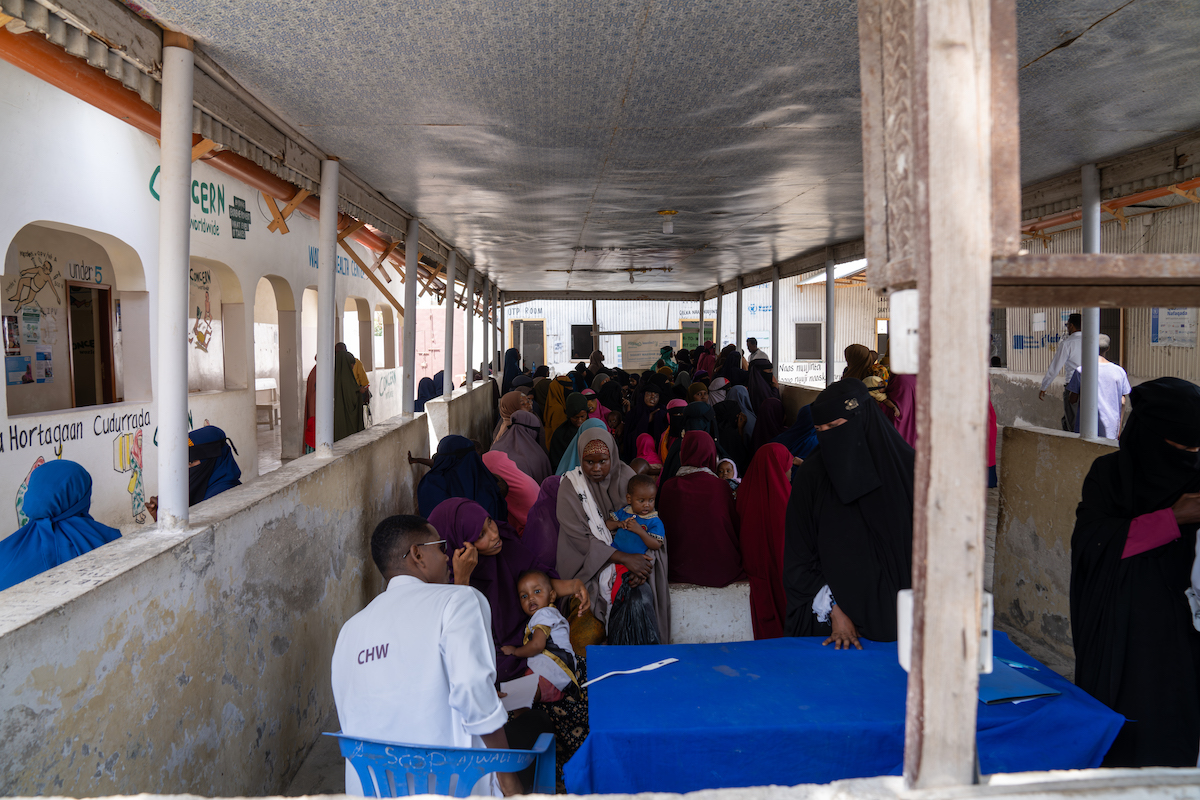
*All names have been changed to protect the security of the individuals.
Hunger in Somalia: Concern’s response
Concern has been in Somalia since 1986. Addressing the causes of hunger in the country continues to be central to our work in the country, with both emergency interventions and longer-term projects designed to build the resilience of affected communities (especially those who are in protracted displacement). We are proud to be UNICEF’s main nutrition partner in the Wadajir district.
A key pillar of our response is unconditional cash transfers (delivered electronically via mobile phones). These enable families to quickly receive money to buy what they most need from local markets, including food and other essentials. Between January 2022 and the end of March 2024, Concern Worldwide distributed approximately $25 million (provided by the European Union) to families, which in turn saved the lives of over 617,000 people.
At the end of 2024, one-fifth of Somalia’s population was coping with high levels of food insecurity — including 1.7 million children facing acute malnutrition (roughly a quarter of whom were facing severe acute malnutrition). Working with both local partners in Wadajir as well as the Ministry of Health, we delivered specialized nutrition services through 17 static and mobile facilities, treating over 63,000 children. We also worked with over 160,000 caregivers to give them the support they needed in ensuring the continued health and success of their families.

